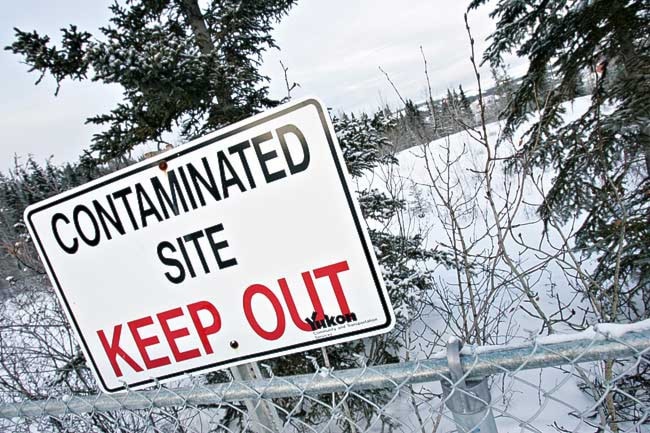The Yukon government is preparing to clean up the Marwell tar pit.
But it all depends on a deal with Ottawa.
“We’re hoping to conclude an agreement soon,” said Nancy Campbell, spokesperson for the Yukon’s Environment Department.
A recent round of talks with Ottawa have been successful, said Campbell. But details on which government will be paying for the cleanup and how much money will be required will not be released until a deal is a sure thing, she said.
Last month, the department went ahead and delegated authority to sign an agreement to Elaine Taylor, the Yukon’s Environment Minister.
There is no timeline for when a deal might be reached, said Campbell. The legal responsibility for the contaminated site isn’t clear either.
The tar pit, located in the industrial sector of Whitehorse, has been a deadly blight in the city for more than 60 years.
Surrounded by a fence and covered in places with a tarp, the pit was left by the Imperial Oil company after it dismantled a nearby oil refinery in 1947.
The site has been on a list of federal contaminated sites for decades.
Its proximity to the Yukon River has generated many worries, but little action.
The Yukon government has been asking Ottawa to clean up the site since at least 1994, when the territory made formal requests that went unanswered.
“Will the government commit to protecting the vulnerable northern environment and start by cleaning up the Marwell tar pit?” said Yukon’s then-member of Parliament Louise Hardy in December 1998 in the House of Commons.
The site has been under the responsibility of the Yukon since 1965 and Ottawa was working with the territory on cleanup pilot tests, said the government’s parliamentary secretary for Indian and North Affairs at the time.
Besides environmental concerns, the tar pit has killed someone at least once.
In 1958, a man named Billy Smith was trapped in the pit and died of exposure, said Hardy in the House, according to Hansard records.
In 2000, the Yukon government issued ministerial orders under the territory’s Environment Act that assigned Imperial Oil as the party responsible for the mess.
That decision was contested by Imperial Oil, according to a 2002 Yukon Supreme Court decision.
It’s unclear what became of the recent legal wrangling. A request for more current information on the tar pit from the Environment Department was not returned by press time.
Contact James Munson at
jamesm@yukon-news.com
